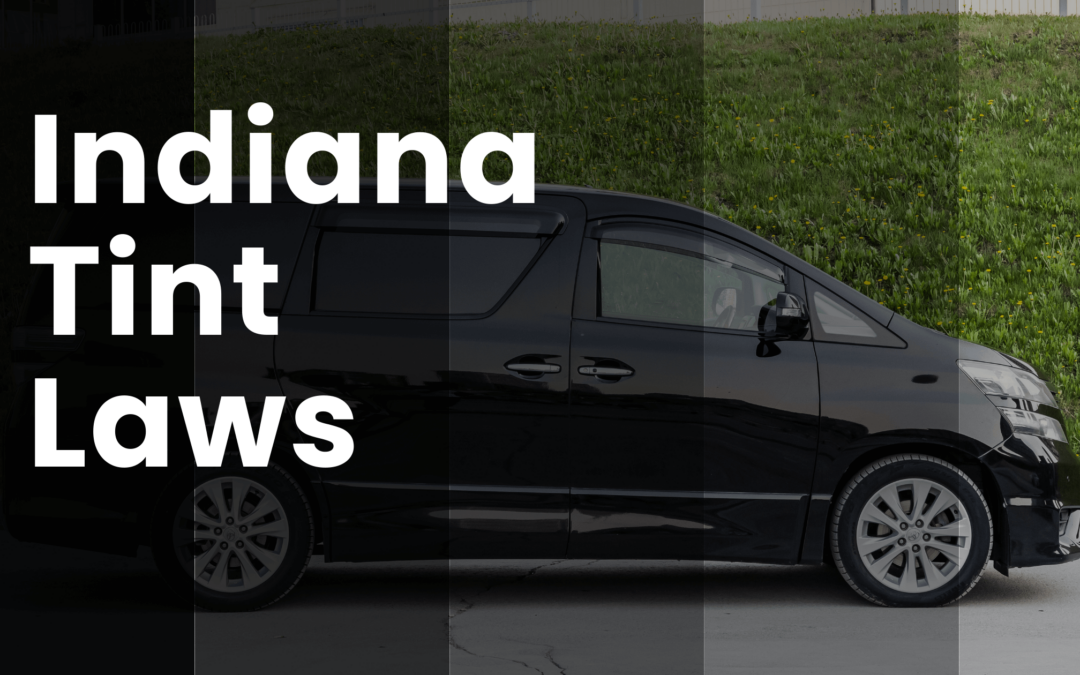Indiana Tint Laws
The Indiana tint laws detail specific automotive tint laws for various cars and SUVs. Indiana implemented its car window tinting regulations back in 2003. We’ve compiled comprehensive details about the permissible darkness and reflectivity levels for window tints in your state.
Disclaimer
Even though I aced Commercial Law at school and strive to provide accurate and informative content, it’s important to note that I am not a legal expert. The information presented in this blog is based on my interpretation of the subject matter, and laws can vary by location and change over time. It is strongly recommended that readers verify all sources of information and consult with legal professionals or relevant authorities before making any decisions related to tint laws.
Understanding the Terminology Regarding Tint Laws
The most important part of the legislation is understanding what VLT is and how law enforcement services check or test the percentage.
What is VLT
VLT, or Visible Light Transmission, is a measure of the amount of visible light that can pass through a window tint or film. It is commonly used to determine the darkness or opacity of window tints, and it’s an important factor in window tinting laws and regulations.
VLT is typically expressed as a percentage. For example, a window tint with a VLT of 20% allows only 20% of visible light to pass through, making it relatively dark and less transparent. Conversely, a window tint with a VLT of 70% allows 70% of visible light to pass through and is much lighter and more transparent.
How do Law Enforcement services test the VLT percentage?
Window tinting laws vary by jurisdiction, and they often specify the maximum allowable VLT for different types of windows on a vehicle, such as the front windshield, front side windows, rear side windows, and rear window. These laws are designed to ensure that drivers have adequate visibility and that law enforcement can see into vehicles for safety and identification purposes. The manner that they go about testing the VLT is by using a VLT gauge/meter.
Here is a YouTube Short from @TrafficServices and @TorontoPolice showcasing the device and how it works. Even though it is in Canada, it still is helpful to understand how the tint darkness is measured.
Window tint Darkness laws in Indiana
Indiana’s regulations on window tint darkness are quite precise, with distinct specifications for sedan cars and SUVs/vans.
For sedans, the VLT (Visible Light Transmission) percentages are as follows:
- Windshield: Non-reflective tint is permitted above the manufacturer’s AS-1 line.
- Front Side windows: A minimum of 30% light transmission is required.
- Back Side windows: A minimum of 30% light transmission is required.
- Rear Window: A minimum of 30% light transmission is required.
SUVs and vans adhere to similar rules regarding the windshield but have some flexibility for side windows:
- Windshield: Non-reflective tint is allowed above the manufacturer’s AS-1 line.
- Front Side windows: A minimum of 30% light transmission is required.
- Back Side windows: Any level of darkness is acceptable, with the exact measurement unspecified, starting several inches from the top of the window.
- Rear Window: Any level of darkness is acceptable, with the exact measurement unspecified, starting several inches from the top of the window.
| Type of Window | Sedans | SUVs/Vans |
|---|---|---|
| Windshield | Non-reflective tint allowed above the manufacturer’s AS-1 line | Non-reflective tint allowed above the manufacturer’s AS-1 line |
| Front Side Windows | Minimum of 30% light transmission required | Minimum of 30% light transmission required |
| Back Side Windows | Minimum of 30% light transmission required | Any level of darkness acceptable, starting several inches from the top |
| Rear Window | Minimum of 30% light transmission required | Any level of darkness acceptable, starting several inches from the top |
Window tint Reflections laws in Indiana
When it comes to window tint reflection, Indiana law allows a certain level of reflectivity, which can help reduce glare and heat. For both sedans and SUVs/vans:
- Front Side windows: Reflectivity must not exceed 25%.
- Back Side windows: Reflectivity must not exceed 25%.
In addition to these specific guidelines, Indiana has other regulations related to window tinting, including:
Side Mirrors
No restrictions.
Restricted Colors
No specific colors are prohibited in the state of Indiana.
Certificates
Film manufacturers must certify the tint they sell in Indiana. Be sure to inquire if your dealer is using certified film.
Stickers
There is no requirement for a sticker to indicate legal tinting.
Medical Exceptions
Indiana allows medical exemptions for special tint.
Regulations for Out-of-State Drivers
The same regulations apply to out-of-state drivers as they do for drivers living in the State.
If you are from States such as Michigan, Ohio, Kentucky, and Illinois, you are expected to abide by these laws and regulations.
Penalties
Violating these regulations can result in Class A or Class C infractions.
It’s important to note that the interpretation of Indiana’s tinting laws and regulations may vary in different counties or localities, so it’s advisable to cross-check the information with your local DMV or law enforcement authorities.
Please be aware that our information about window tint laws in Indiana is accurate as of 2023.

